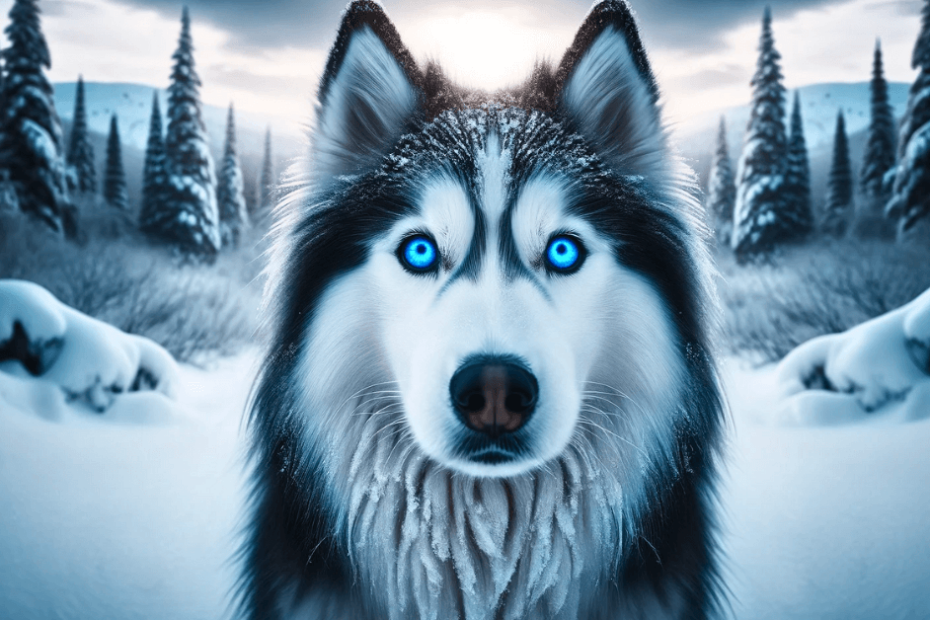Dogs have been man’s best friend for centuries. From providing companionship to protecting their owners, dogs have played an important role in human lives.
Among the many breeds of dogs, there are some that bear a striking resemblance to wolves.
These dogs that look like wolves are often sought after by dog owners who want to experience the beauty and grace of a wolf in their own home.
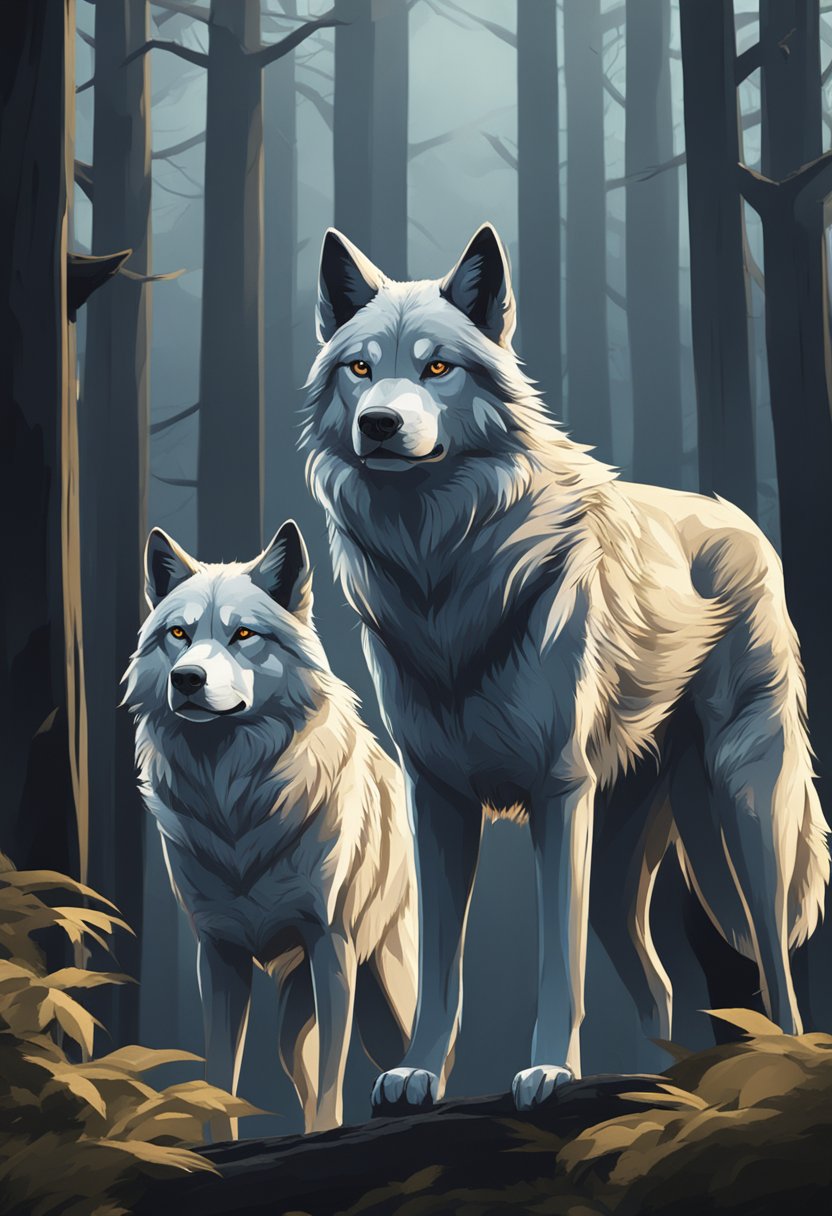
1. Alaskan Malamute
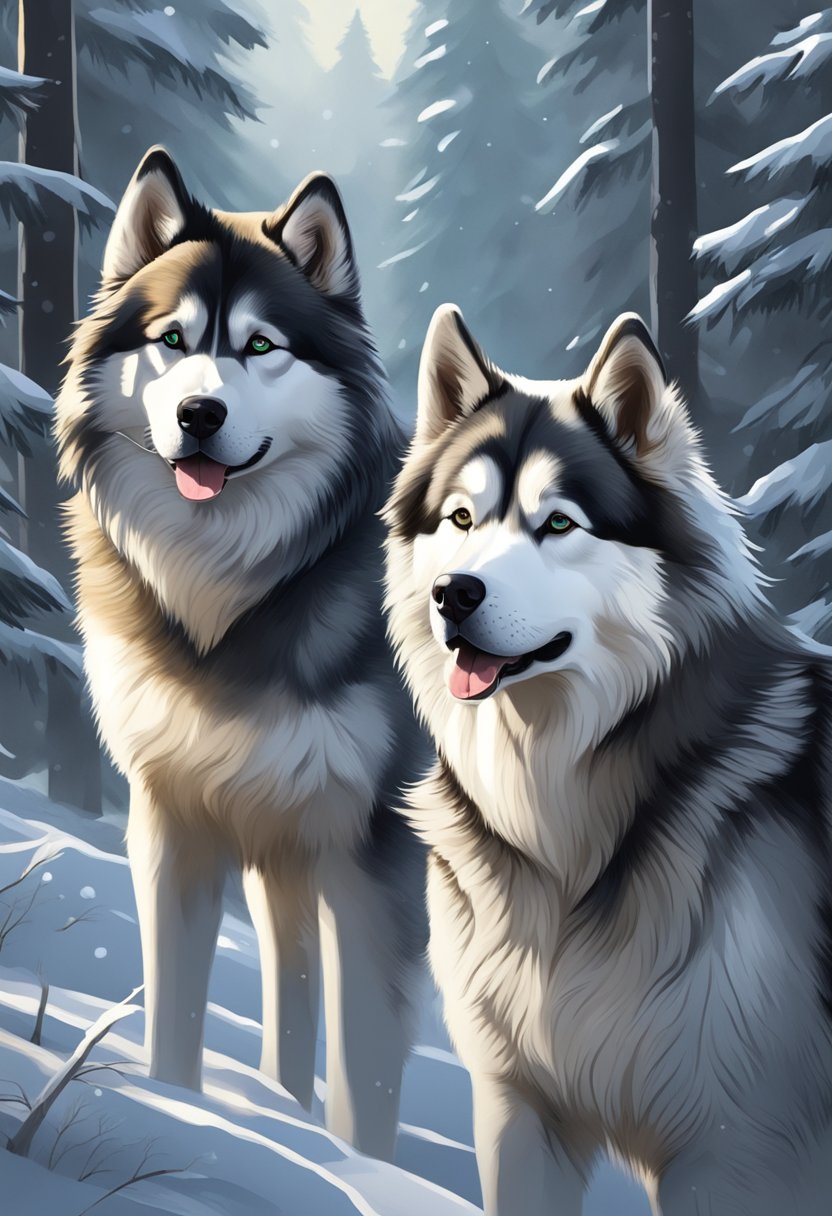
The Alaskan Malamute is a large and powerful breed that has a thick and dense coat, which is often wolf-like in appearance.
They are often mistaken for wolves due to their striking resemblance, but they are actually domesticated dogs.
This breed has a friendly and loyal personality, making them great family pets.
They are also highly intelligent and trainable, but they can be stubborn at times.
Alaskan Malamutes are known for their strength and endurance, which makes them great working dogs.
Here are some key characteristics of the Alaskan Malamute:
- Weight: 75-100 pounds
- Height: 22-26 inches
- Lifespan: 10-14 years
- Coat: Thick, double coat that comes in various colors, including gray, black, and white
- Temperament: Friendly, loyal, intelligent, and independent
- Exercise Needs: High energy and requires daily exercise, such as long walks or runs
It’s important to note that the Alaskan Malamute is not a suitable breed for everyone.
They require a lot of space and exercise, and their thick coat requires regular grooming.
They also have a strong prey drive, so they may not be the best choice for households with small pets.
2. Siberian Husky
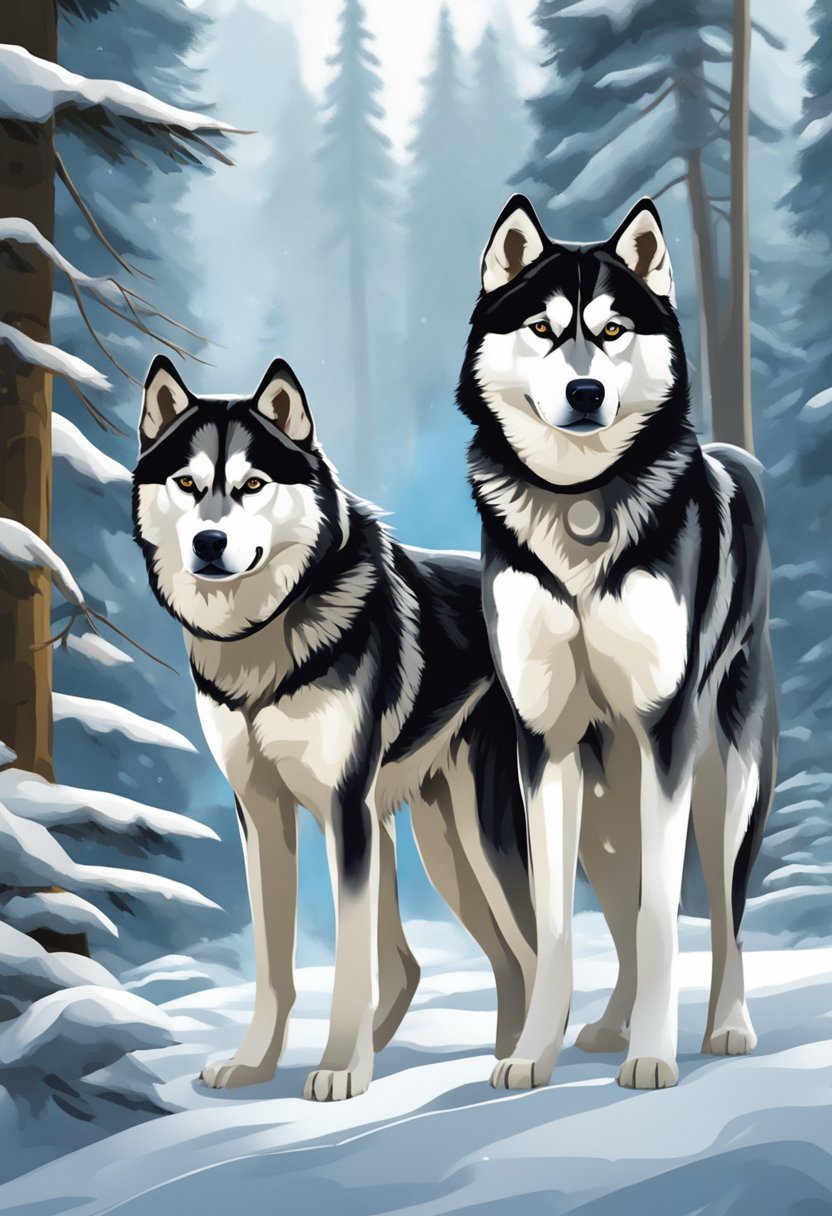
The Siberian Husky is a medium-sized dog breed that is often mistaken for a wolf due to its striking resemblance to the wild animal.
This breed is known for its thick fur and piercing blue eyes, which add to its wolf-like appearance.
Siberian Huskies were originally bred as working dogs for the Chukchi people of Siberia, and they were used for pulling sleds and carrying heavy loads over long distances.
Siberian Huskies are highly energetic and require plenty of exercise to keep them happy and healthy.
They are also known for their friendly and outgoing nature, making them great family pets.
However, they can be stubborn at times and require consistent training to prevent them from becoming destructive.
When it comes to grooming, Siberian Huskies shed heavily twice a year and require regular brushing to keep their coat healthy and free of tangles.
They are also prone to certain health issues such as hip dysplasia, eye problems, and skin allergies, so it is important to keep up with regular vet check-ups to catch any issues early on.
3. Czechoslovakian Wolfdog
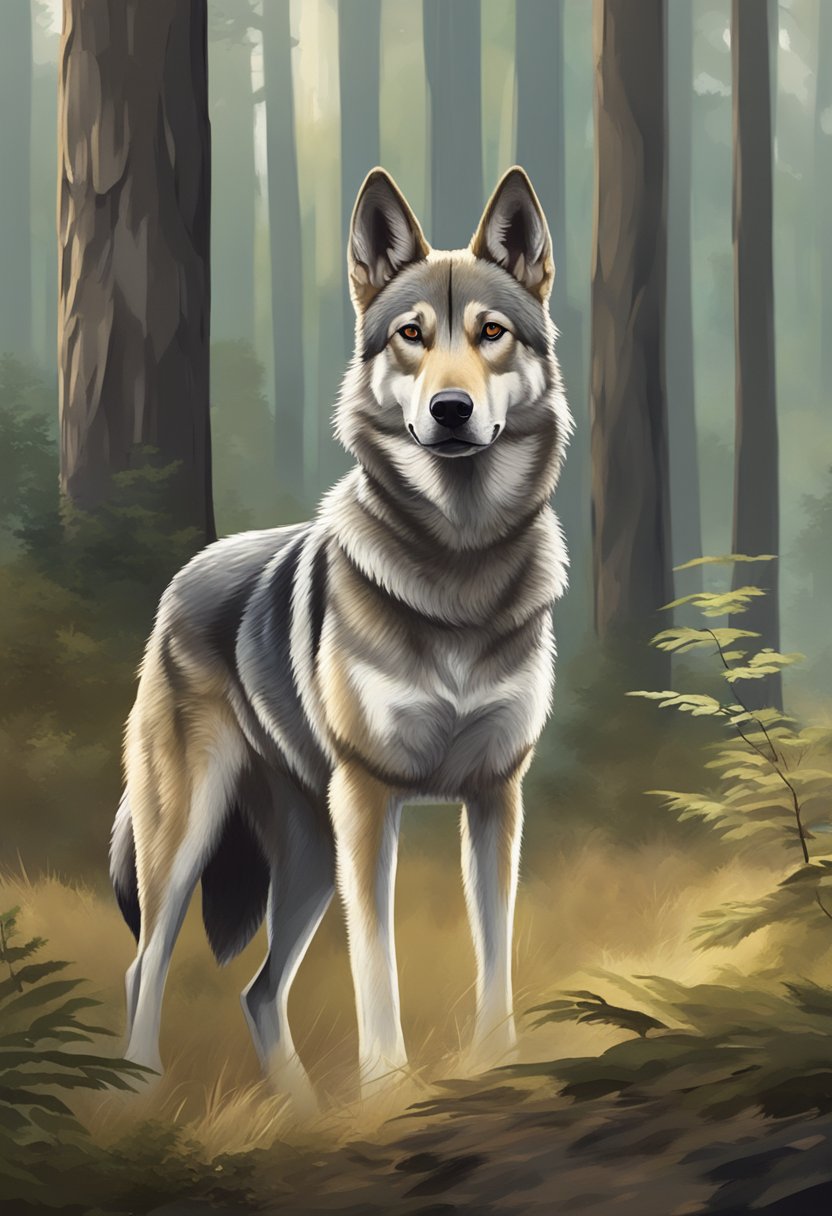
The Czechoslovakian Wolfdog is a breed that was originally bred for border patrol in Czechoslovakia in the 1950s.
As the name suggests, this breed resembles a wolf in body shape, movement, coat texture, coat color, and facial markings. They are also known as Czechoslovakian vlcak.
Appearance
Czechoslovakian Wolfdogs have a muscular, athletic build that is similar to that of a wolf.
They are typically medium to large in size, standing at 24-26 inches tall and weighing 45-55 pounds.
Their coat is thick and dense, with colors ranging from gray to yellowish-gray to silver.
Temperament
Czechoslovakian Wolfdogs are known for their bravery, athleticism, and sociability.
They are energetic dogs that require a lot of exercise and mental stimulation.
They are also known to be loyal and affectionate towards their owners.
However, they are not recommended for first-time dog owners, as they require an experienced owner who can provide proper training and socialization.
Care
Czechoslovakian Wolfdogs require regular exercise and mental stimulation to keep them happy and healthy.
They also require a high-quality diet that is appropriate for their age, size, and activity level.
Regular grooming is also necessary to maintain their thick coat.
Health
Like all breeds, Czechoslovakian Wolfdogs may be prone to certain health issues.
Some of the most common health issues that affect this breed include hip dysplasia, elbow dysplasia, and eye problems.
It is important to choose a reputable breeder who screens their dogs for these health issues.
4. Saarloos Wolfdog
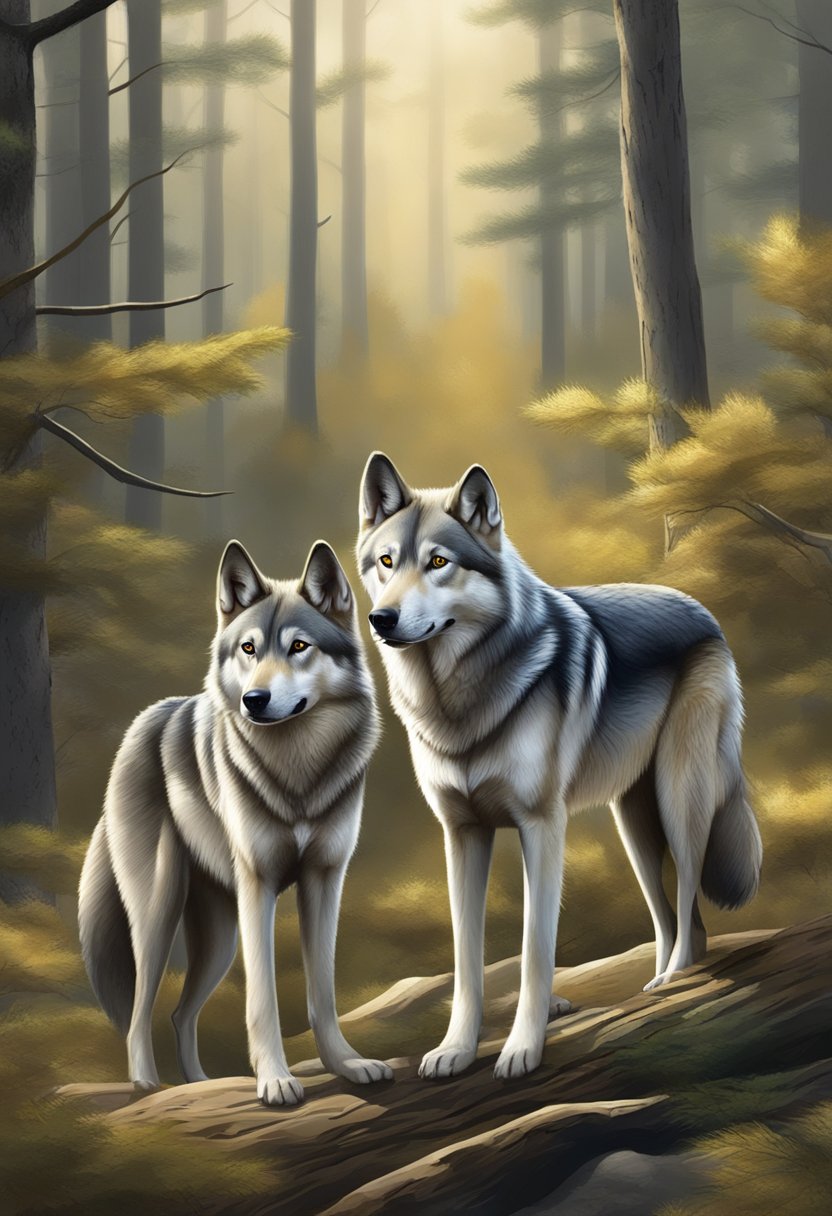
The Saarloos Wolfdog is a breed of dog that closely resembles a wolf in appearance.
They have a dense, wolf-like coat that is typically a mix of gray, black, and white.
Their eyes are almond-shaped and can be yellow or brown, adding to their wolf-like appearance.
This breed was developed in the Netherlands in the 1930s by a man named Leendert Saarloos.
He crossed a German Shepherd with a Eurasian wolf in an attempt to create a breed that had the intelligence and trainability of a German Shepherd, but with the physical characteristics of a wolf.
The Saarloos Wolfdog is a large breed, weighing between 70 and 90 pounds.
They are known for being shy and reserved, but also loyal and affectionate with their owners.
They are not typically aggressive, but they can be wary of strangers and may require socialization training to help them feel more comfortable around new people.
Due to their wolf-like appearance, the Saarloos Wolfdog is often mistaken for a wolf, which can lead to legal issues in some areas where owning a wolf is prohibited.
It is important for potential owners to research their local laws and regulations before considering this breed.
Here are some quick facts about the Saarloos Wolfdog:
- Origin: Netherlands
- Height: 24-30 inches (male), 22-28 inches (female)
- Weight: 70-90 pounds
- Life Expectancy: 10-12 years
- Temperament: Shy, reserved, loyal, affectionate
- Coat: Dense, wolf-like coat in shades of gray, black, and white
Overall, the Saarloos Wolfdog is a unique and fascinating breed that is perfect for owners who are looking for a loyal and affectionate companion with a striking wolf-like appearance.
5. Canadian Eskimo Dog
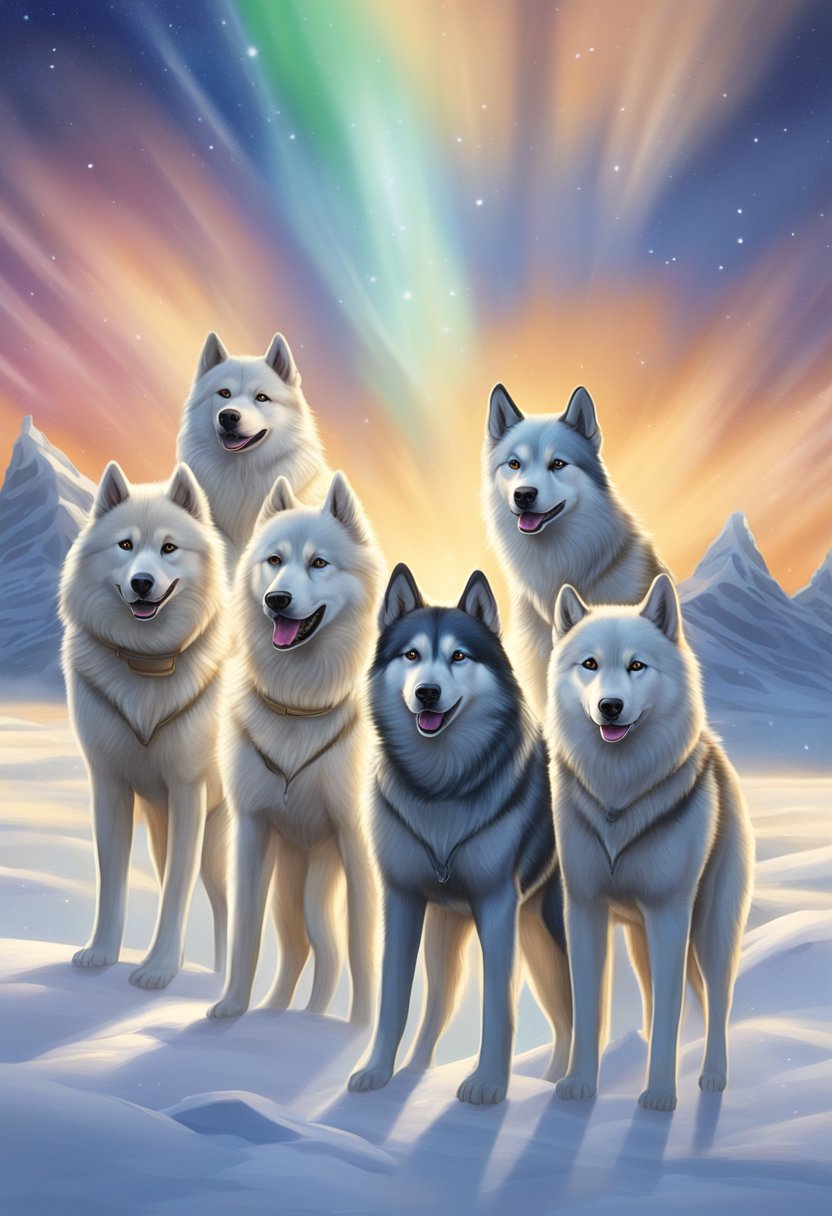
The Canadian Eskimo Dog is a large breed of dog that is closely related to the wolf.
They are known for their strong and sturdy build, with a thick coat of fur that helps them survive in the harsh Arctic climate.
Appearance
Canadian Eskimo Dogs have a wolf-like appearance, with a broad head, pointed ears, and a thick, bushy tail.
They have a muscular build and are typically larger than other breeds of dogs, with males weighing up to 110 pounds and females weighing up to 95 pounds.
Their coat is thick and dense, with a woolly undercoat and longer guard hairs that help protect them from the cold.
Temperament
Canadian Eskimo Dogs are known for their friendly and affectionate nature.
They are loyal and protective of their owners, making them excellent guard dogs.
They are also highly intelligent and trainable, but can be stubborn at times.
They have a strong prey drive and may not be suitable for households with small pets.
Health
Canadian Eskimo Dogs are generally healthy dogs, but like all breeds, they are prone to certain health issues.
These can include hip dysplasia, eye problems, and various types of cancer.
It is important to provide them with proper nutrition and regular exercise to keep them healthy and happy.
Overall, the Canadian Eskimo Dog is a beautiful and friendly breed that is well-suited to life in cold climates.
They are loyal and protective of their owners, and make excellent companions for those who are willing to provide them with the care and attention they need.
6. Tamaskan Dog
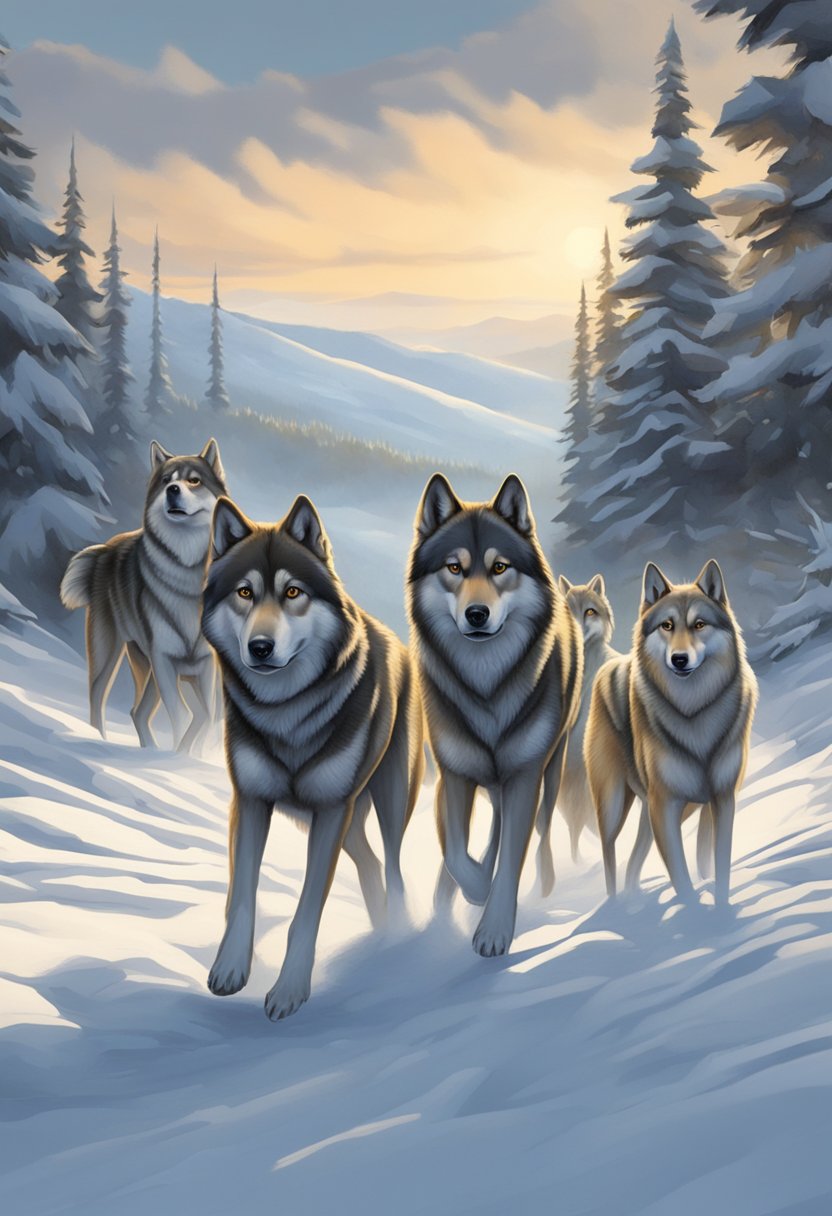
The Tamaskan Dog is a breed that was developed to look like a wolf but without any wolf content.
They are a relatively new breed, having been developed in Finland in the 1980s.
Tamaskans are medium to large-sized dogs that weigh between 55-88 pounds and stand 24-28 inches tall.
Appearance
Tamaskans have a thick double coat that can be a variety of colors, including gray, black, and white.
Their eyes are almond-shaped and can be brown, amber, or yellow. They have a wolf-like appearance, with a long snout, pointed ears, and a bushy tail.
Temperament
Tamaskans are known to be friendly, intelligent, and social dogs.
They are good with children and make great family pets.
However, they do require a lot of exercise and mental stimulation to keep them happy and healthy.
They are also known for their loyalty and protective nature, making them excellent watchdogs.
Health
Tamaskans are generally healthy dogs with a lifespan of 14-15 years.
However, like all breeds, they can be prone to certain health issues, such as hip dysplasia and eye problems.
It is important to keep up with regular vet checkups and maintain a healthy diet and exercise routine to ensure their long-term health.
7. Northern Inuit Dog

The Northern Inuit Dog is a breed that was first developed in the 1980s in the United Kingdom.
They are a mix of German Shepherds, Siberian Huskies, and Alaskan Malamutes, bred to resemble the appearance of a wolf.
They are a large breed, with males typically weighing between 79-110 pounds and females between 61-88 pounds.
Appearance
Northern Inuit Dogs have a thick, double coat that is usually white, black, or gray in color.
They have a wolf-like appearance with a broad head, pointed ears, and a long snout.
Their eyes are usually amber or brown in color, and they have a muscular build.
Temperament
Northern Inuit Dogs are known for their friendly and loyal nature.
They are social dogs that enjoy being around people and other animals.
They are also intelligent and trainable, making them a good fit for families with children.
However, they do have a high prey drive and may not be the best fit for households with small pets.
Exercise and Training
Northern Inuit Dogs are an active breed that requires regular exercise and mental stimulation.
They enjoy outdoor activities such as hiking, running, and swimming. They are also highly trainable and respond well to positive reinforcement training methods.

